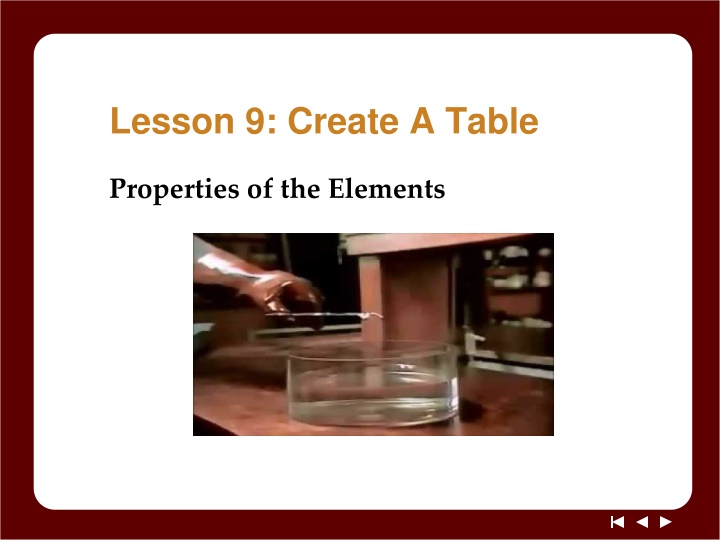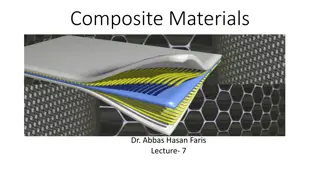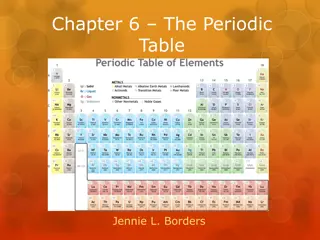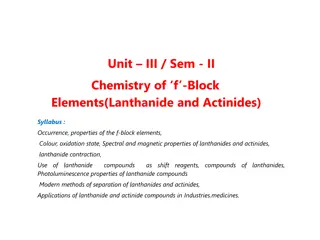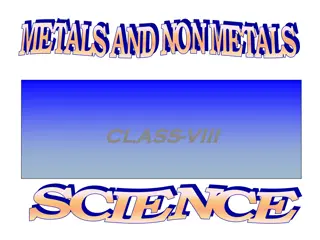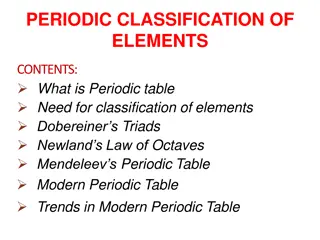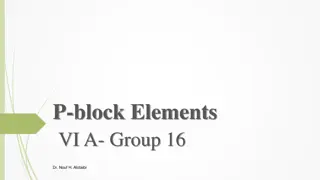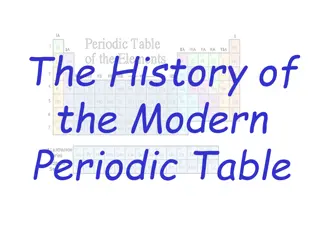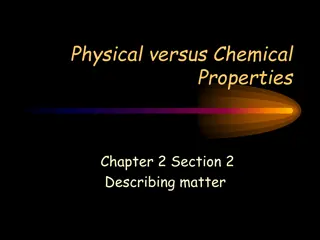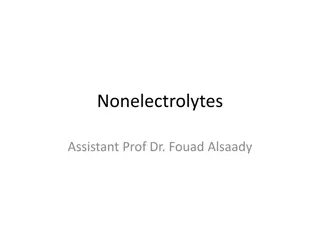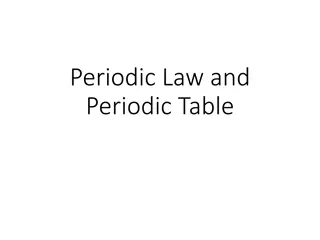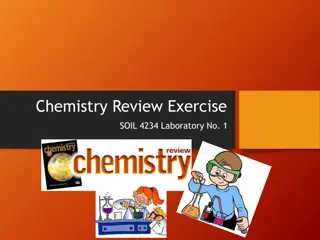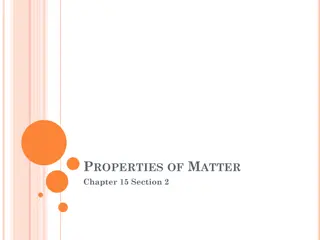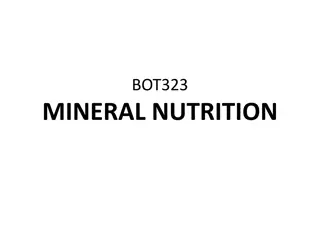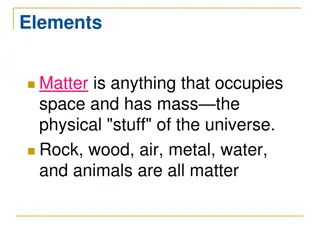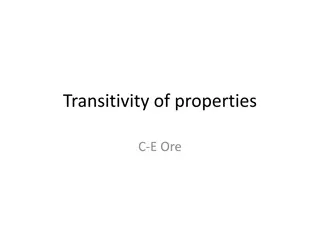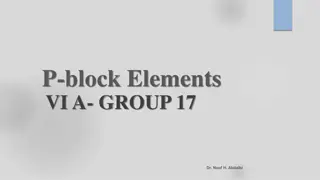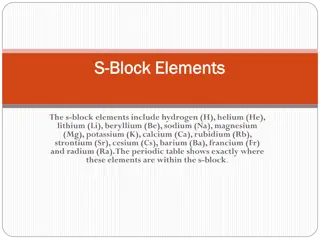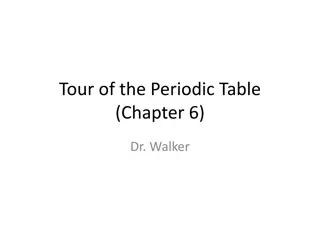Organizing Elements Based on Their Properties
In this lesson, explore how the periodic table is organized according to reactivity and atomic mass. Understand Mendeleev's contribution to predicting elements and their properties. Work in groups to discuss and analyze the table data for a hands-on learning experience.
Download Presentation

Please find below an Image/Link to download the presentation.
The content on the website is provided AS IS for your information and personal use only. It may not be sold, licensed, or shared on other websites without obtaining consent from the author.If you encounter any issues during the download, it is possible that the publisher has removed the file from their server.
You are allowed to download the files provided on this website for personal or commercial use, subject to the condition that they are used lawfully. All files are the property of their respective owners.
The content on the website is provided AS IS for your information and personal use only. It may not be sold, licensed, or shared on other websites without obtaining consent from the author.
E N D
Presentation Transcript
Lesson 9: Create A Table Properties of the Elements
ChemCatalyst 1. How do you think the elements are organized in this table? 2. What do you think Mendelev was trying to do?
Key Question How is the periodic table organized?
You will be able to: describe how the organization of the periodic table is based on reactivity and atomic mass predict the characteristics of a missing element on the periodic table based on its position in the table
Prepare for the Activity Work in groups of four with one set of Create a Table cards for each group.
Prepare for the Activity (cont.) Atomic Mass: The mass of a single atom (or isotope) of an element. Each element has an average atomic mass that is expressed as a decimal number. These are the numbers that appear in the ChemCataylst and also on the Create a Table cards.
Prepare for the Activity (cont.) What is reactivity? Reactivity: A property that describes whether an element or compound will chemically combine with other substances to form compounds and also describes the speed of a reaction. Reactivity information is included on the Create a Table cards.
Discussion Notes Mendeleyev organized his periodic table based on the properties of the elements, such as reactivity and atomic mass. Mendeleyev s arrangement of the elements helped predict the existence and properties of as-yet- undiscovered elements.
Wrap Up How is the periodic table organized? Mendeleyev organized his periodic table based on the properties of the elements, specifically, reactivity and atomic mass. Elements in each column of the periodic table have similar properties. Reactivity describes whether an element will chemically combine with other common substances and also describes the speed of the reaction. Mendeleyev s arrangement of the elements helped predict the existence of undiscovered elements.
Check-In Which of these elements would be grouped together on the periodic table? Explain your thinking. cadmium Cd moderately soft, silvery, solid, metal reacts very slowly with water found in CdCl2(s) zinc Zn moderately hard, silvery, solid, metal reacts very slowly with water found in ZnCl2(s) iodine I purple, solid, nonmetal reacts slowly with metals found in ICl(s) mercury Hg does not react with water silvery, liquid, metal found in HgCl2(s)
